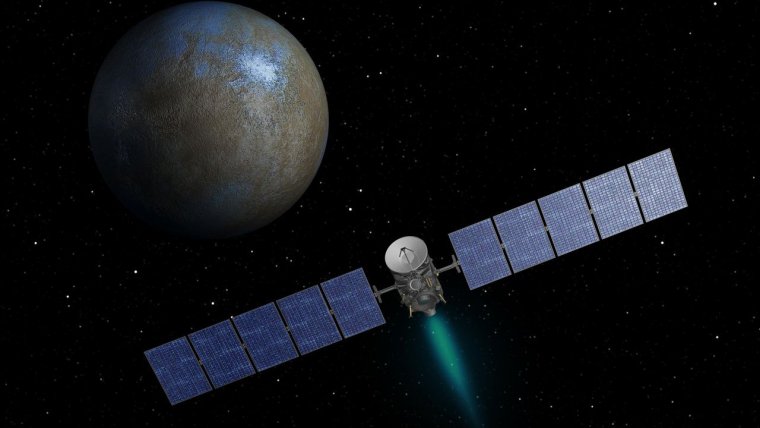| News / Space News |
Dawn Spacecraft Begins Approach to Dwarf Planet Ceres
NASA | JANUARY 4, 2015
NASA's Dawn spacecraft has entered an approach phase in which it will continue to close in on Ceres, a Texas-sized dwarf planet never before visited by a spacecraft. Dawn launched in 2007 and is scheduled to enter Ceres orbit in March 2015.

This artist's concept shows NASA's Dawn spacecraft heading toward the dwarf planet Ceres. ![]()
Dawn recently emerged from solar conjunction, in which the spacecraft is on the opposite side of the sun, limiting communication with antennas on Earth. Now that Dawn can reliably communicate with Earth again, mission controllers have programmed the maneuvers necessary for the next stage of the rendezvous, which they label the Ceres approach phase.
Dawn is currently 640,000 kilometers from Ceres, approaching it at around 725 kilometers per hour.
The spacecraft's arrival at Ceres will mark the first time that a spacecraft has ever orbited two solar system targets. Dawn previously explored the protoplanet Vesta for 14 months, from 2011 to 2012, capturing detailed images and data about that body.
Ceres, with an average diameter of 950 kilometers, is the largest body in the asteroid belt, the strip of solar system real estate between Mars and Jupiter. By comparison, Vesta has an average diameter of 525 kilometers, and is the second most massive body in the belt.
YOU MAY ALSO LIKE



